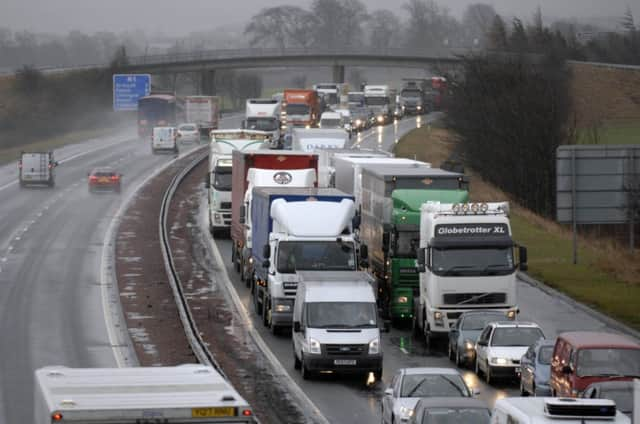If the A9 can be dualled, why not tracks too?


Ihave a lot of time for Phil Flanders of the Road Haulage Association (Friends of The Scotsman, 3 January). Over many years he has proved himself a principled advocate of road haulage, and put a lot of effort into promoting greater use of rail for the trunk haul by road hauliers. But his argument for raising lorry speed limits to 50mph on single-carriageway sections of the A9 leaves fundamental questions – on competition and safety – unanswered.
The key issue is, of course, safety. And the website of the A9 Safety Group (whose members include the RHA, the Freight Transport Association and Police Scotland) states unambiguously that “retaining the 40mph speed limit is the safest option”. The group’s research concluded that the combination of safety cameras and a 50mph limit for lorries would reduce A9 fatal accidents by 27 per cent – but keeping the limit at 40mph would cut the death toll by 36 per cent. The same pattern applied with serious and slight injury accidents, with the 40mph limit achieving significantly better safety outcomes than 50mph.
Advertisement
Hide AdAdvertisement
Hide AdSo why has the RHA been pressing – successfully – for 50mph? The clue lies perhaps in Mr Flanders’ admission that 50mph will be “good for business”. Over the long haul from Central Scotland to Inverness, the increased speed limit on single-carriageway sections may allow lorry journey times to be cut sufficiently to achieve an out-and-back delivery in a single driver’s shift where this is not currently possible. That is potentially much more significant for competition with rail than his dismissive reference to “marginal increases in road haulage efficiency”.
Currently, virtually every train between Perth and Inverness has to spend time sitting in one or more crossing loops waiting for an oncoming train – because no fewer than two-thirds of the 118-mile route is still single-track. Contrast the A9, where a lorry can make an uninterrupted journey from Central Scotland to Inverness on a road that was completely rebuilt in the 1980s.
While one can understand the road haulage sector fighting its own corner, what of the Scottish Government and its role in protecting the wider public interest? Given the A9 Safety Group’s research results, it would appear that the Government – in authorising a three-year 50mph trial – is willing to countenance fewer lives being saved and fewer people avoiding injury, if that satisfies road haulage interests and impatient car drivers.
This unfair skewing of traffic management policy in favour of one mode of transport represents a threat to existing freight traffic on the railway – which has a substantially better safety record than the road, as well as generating a fraction of the carbon dioxide emissions. And the situation is set to get even worse, with the Government planning full dualling of the A9, for a breathtaking price tag of £3 billion – while as-yet-unspecified upgrades to the Perth-Inverness railway are capped at just £600 million.
Since a special case is being made for A9 road hauliers, what enhancements will be made by government to support Central Scotland-Inverness rail freight services – in order to maintain, at the very least, the current equilibrium for competition between road and rail?
Looking to the longer term picture on the Perth-Inverness corridor, it is unacceptable that rail enhancement should have such low priority. If full dualling is good enough for the A9, similar treatment should be good enough for the railway – providing a step change in capacity and quality for both freight and passengers. In reaching its decision to dual the A9, the Government’s appraisal process was flawed, as it did not examine cross-modal packages of road and rail investment to determine the optimum mix to meet policy objectives and provide best value for the taxpayer. Too much transport policy is politics-led rather than evidence-based, and this usually means road gets priority over rail. It’s in everyone’s interests – even road hauliers’ – to get more freight on rail between Perth and Inverness, but the rail freight sector can only do so much in terms of “improving efficiency“ with one hand ied behind its back by Government policy.
• David Spaven is Scottish Representative of the Rail Freight Group www.rfg.org.uk
SEE ALSO